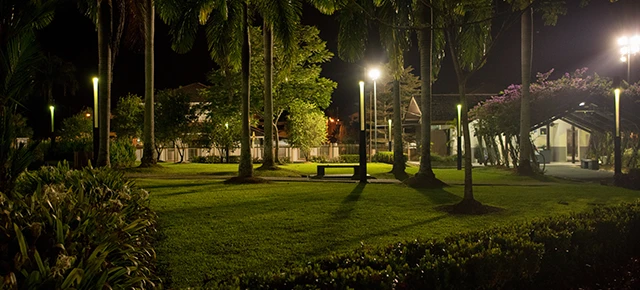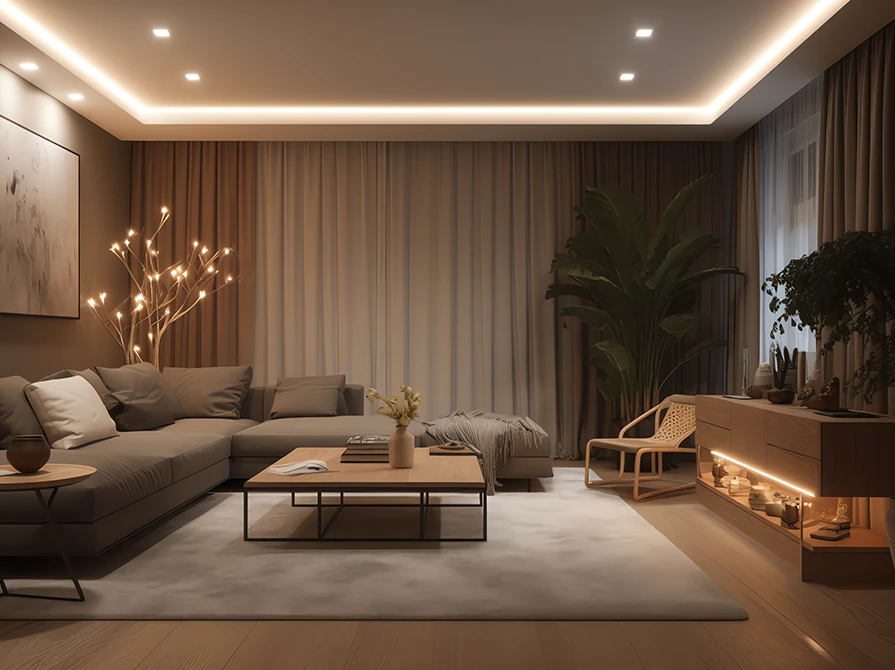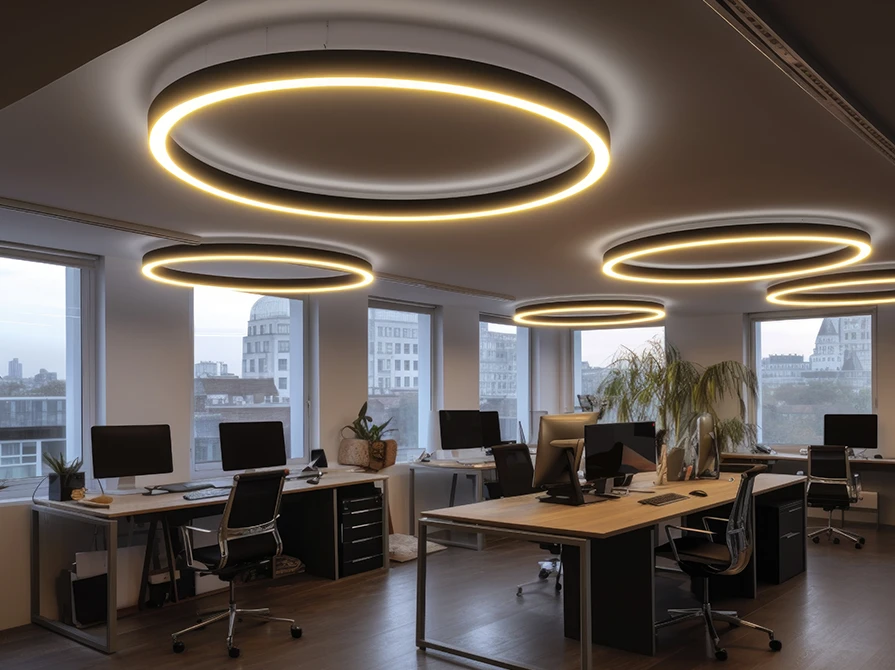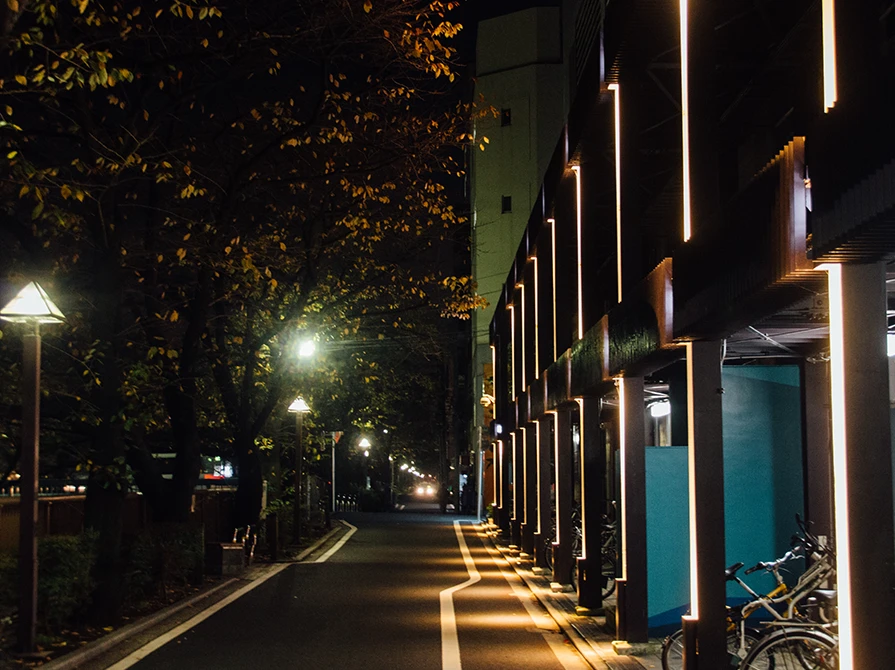


The invention of artificial light has fundamentally transformed the way we live, especially during the nighttime hours. Before its advent, human activities after sunset were severely limited, constrained by the natural retreat of daylight. However, with the creation of electric and other forms of artificial lighting, our nights have become vibrant, bustling extensions of our days. Cities never sleep and our work, entertainment, and social lives continue uninterrupted long into the night. This advancement has undoubtedly enhanced our productivity and convenience.
Yet, the convenience of artificial light comes at a cost to the environment and ecosystems. Light pollution, a direct result of excessive and misdirected artificial lighting, disrupts natural ecosystems. It disturbs the behavior and habitats of wildlife, affects plant growth, and interferes with celestial observations. Additionally, excessive exposure to artificial light, especially at night, has been linked to health issues in humans, such as sleep disorders and disruptions in circadian rhythms. Striking a balance between the benefits of artificial light for human activities and its preservation of the environment is a crucial challenge in our modern, illuminated world.
Light pollution refers to the excessive, misdirected, or obtrusive artificial light produced by human activities that disrupt the natural darkness of the night sky. It's a consequence of the widespread use of artificial lighting in urban and suburban areas, often characterized by the brightening of the night sky and the scattering of light that can be seen far beyond its intended target. The environmental and ecological impacts of light pollution are significant:
Firstly, it disrupts the natural behaviors of wildlife, particularly nocturnal animals. Many species rely on the darkness of the night to hunt, navigate, and mate. Artificial light can confuse their natural instincts, impacting their ability to find food and mates, potentially leading to population declines.
Secondly, light pollution can disturb ecosystems by altering the predator-prey relationships. For example, excessive lighting near bodies of water can attract insects, which in turn attracts more predators. This can lead to imbalances in local ecosystems.
Moreover, it can interfere with the reproductive patterns of various species. Sea turtles, for instance, are known to be disoriented by coastal lights, leading hatchlings away from the sea, which can be detrimental to their survival.
Lastly, light pollution affects plant behavior and can disrupt the timing of flowering and fruiting in some species, potentially affecting the pollinators and herbivores that rely on these plants.
In essence, light pollution not only obscures our view of the stars but also disrupts the delicate balance of natural ecosystems and poses serious ecological consequences. Addressing this issue is crucial to mitigate its impacts on both the environment and human health.
Gardens are an essential part of ecosystems, providing numerous benefits to both local and regional biodiversity. However, the artificial light we introduce into these environments must be thoughtfully managed to minimize its disruptive effects on wildlife, plants, and overall ecosystem dynamics. Balancing the advantages of well-lit gardens with the conservation of natural darkness is a critical aspect of responsible garden design and maintenance in our increasingly urbanized world. Here’s how some specific kinds of garden lighting and fixtures negatively impact the ecosystem they are in:
Light with a color temperature exceeding 4000K is typically categorized as blue or white light. It's important to note that this type of light is not just harmful to human well-being but also poses significant threats to the environment, particularly wildlife. One of the most concerning aspects of blue light is its capacity to significantly brighten the night sky far more than other types of lighting, causing a skyglow. This excessive brightness aggravates light pollution, causing more harm than good. The International Dark-Sky Association (IDA) advises using lighting with a color temperature of 3000K or lower, often referred to as warm light. However, many new residential and commercial spaces, including city municipalities, opt for higher color temperature lighting in their garden areas since warm lights do not provide bright illumination and good color rendering. This preference for higher color temperatures makes it challenging to balance the aesthetic and practical aspects of outdoor lighting w.r.t. its ecological impact.
Light trespass occurs when artificial light spills over from one property or area to another where it is not intended or needed. It typically involves light crossing property boundaries or illuminating areas where it is unwanted, such as shining into homes, windows, public spaces, and even the sky. Installing high lights in the garden can cause the light to scatter in unwanted directions. Another way light can trespass is with the use of unshielded and glare-producing fixtures. These factors also contribute to skyglow along with trespass. This extra, unwanted light disrupts the natural flow of the ecosystem. Gardens with an abundance of lighting fixtures, especially when they are not needed, also consume unnecessary energy and contribute to light pollution. This includes excessive use of decorative lights, floodlights, and path lighting.
Incandescent bulbs are highly inefficient at converting electricity into light. They produce more heat than light, with as much as 90% of the energy they consume being wasted as heat. This inefficiency means that more electricity needs to be generated to power them, leading to increased greenhouse gas emissions when fossil fuels are the energy source. They contain tungsten filaments, which can release toxic fumes if the bulb breaks. Additionally, the manufacturing process for incandescent bulbs can involve the use of harmful chemicals. The increased energy consumption associated with incandescent bulbs directly contributes to higher carbon dioxide emissions when the energy is generated from fossil fuels. This contributes to climate change and environmental degradation. LED lights are the best environmentally-conscious options available but they do produce white light contributing to skyglow.
Addressing the environmental impact of outdoor garden lighting may appear challenging, but there are actionable steps we can take to monitor and manage their usage thoughtfully.
To begin with, it's essential to use outdoor lighting only where it serves a purpose and to reduce the number of fixtures based on necessity. By doing so, we can significantly curtail unnecessary light pollution.
Opting for motion sensor luminaires, which activate lights when the area is in use, can dramatically mitigate their environmental impact. Illumination that remains on continuously, especially in areas with low foot traffic, should be avoided to conserve energy and minimize ecological disturbance
Another vital consideration is the use of dusk-to-dawn sensors, and encourage their installation in local parks and public spaces if they're not already in place.
Solar lighting systems offer an eco-friendly alternative. They are cost-effective, emit a softer, warm glow, and are exceptionally energy-efficient. By adopting solar-powered lights, we can reduce reliance on conventional energy sources.
Positioning fixtures closer to the ground helps prevent light trespass and employing hooded or shielded fixtures aids in controlling glare and moderating skyglow. These measures collectively contribute to a more responsible and eco-conscious approach to outdoor garden lighting, ensuring our outdoor spaces remain well-lit while preserving the environment.







